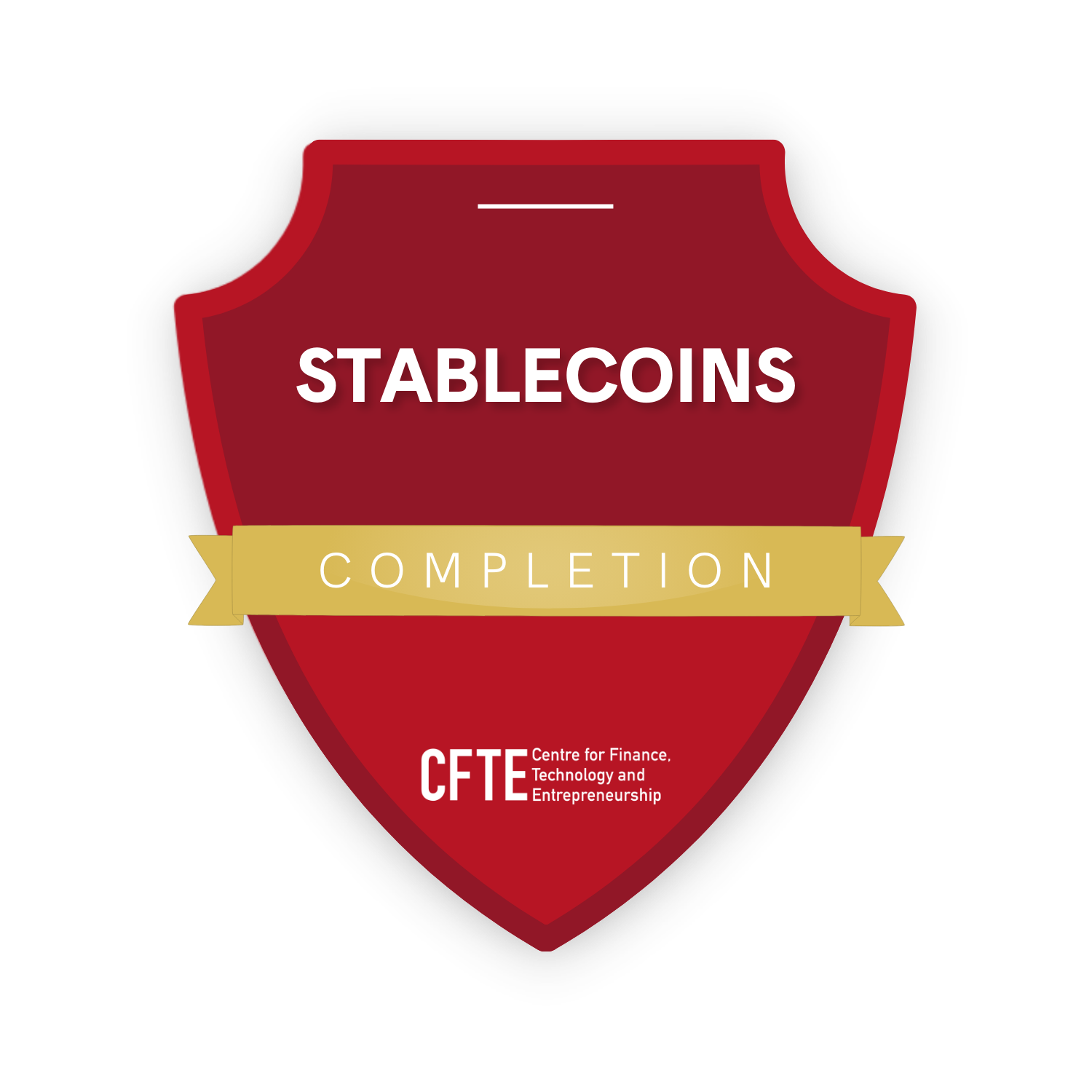Digital Assets
Stablecoins
Get equiped with a comprehensive understanding of stable cryptoassets in today's evolving landscape. Explore the fundamentals, risks, and regulatory aspects of stabecoins and gain insights into the broader financial context by comparing collateral-based stablecoins with the legacy of money market funds.
Write your awesome label here.
Cryptocurrency
Blockchain
Money Market Funds (MMFs)
Decentralised Finance (DeFi)
Collateralisation
Course Lessons
What are Stablecoins?
In the first chapter, you will learn what exactly is a stablecoin and how far stablecoins have come, from the launching of the first stablecoin to the downfall of Terra, UST. You will learn the different types of stablecoins and how each of them is linked to different asset classes. You will also gain a deeper understanding of the whole stablecoin market and how it measures against the whole crypto market.
Who uses Stablecoins and why?
In the next chapter, you will first understand the risk profile of a stablecoin, and how it fares among other asset classes based on liquidity and risk levels. You will also learn what are the different applications of stablecoins.
How do Stablecoins work?
In the last chapter, you will learn how money market funds(MMF) work and how they are being hedged. You will understand the objectives of the fund managers and how these MMFs are regulated. You will then be able to understand the similarities between stablecoins and MMF by looking at the disclosure between collateralised stablecoins and an MMF
The Applications and Functions of Stablecoins
In this chapter, we will explore the various applications and functions of stablecoins. We will discuss how stablecoins can be used in decentralised finance and how they can be used to facilitate transactions. We will also examine the potential for stablecoins to disrupt traditional finance and the potential risks and challenges that may arise. By the end of this chapter, you will have a comprehensive understanding of how stablecoins can be used and the potential impacts they may have on the market.
Conclusion
In conclusion, stablecoins are an exciting and rapidly evolving aspect of the world of cryptocurrencies. In this course, we have explored the various types of stablecoins, the mechanisms behind their pegging, and the various applications and functions they can serve. By the end of this course, you will have a solid understanding of stablecoins and be able to apply this knowledge to your own investments and professional pursuits.



